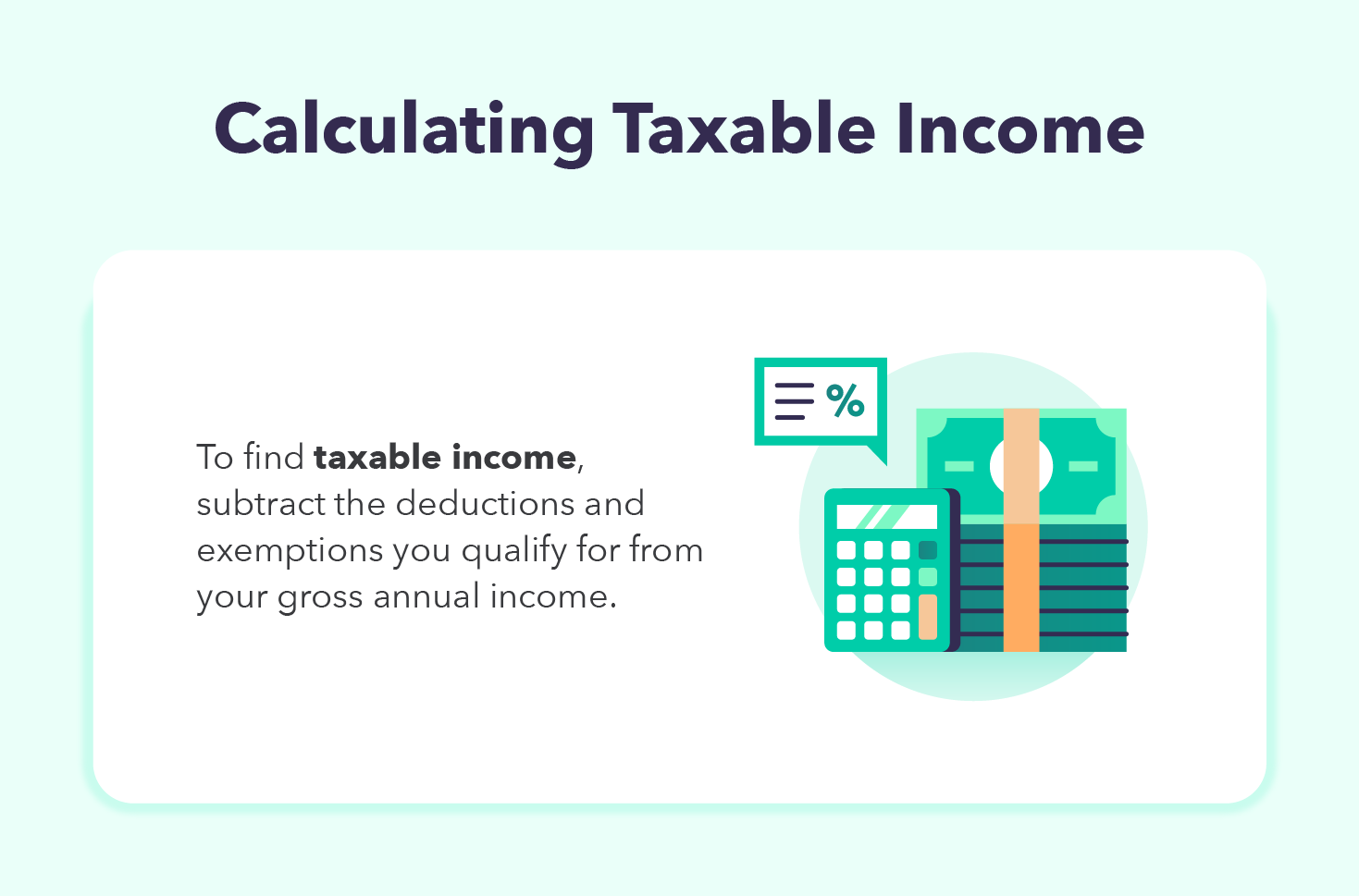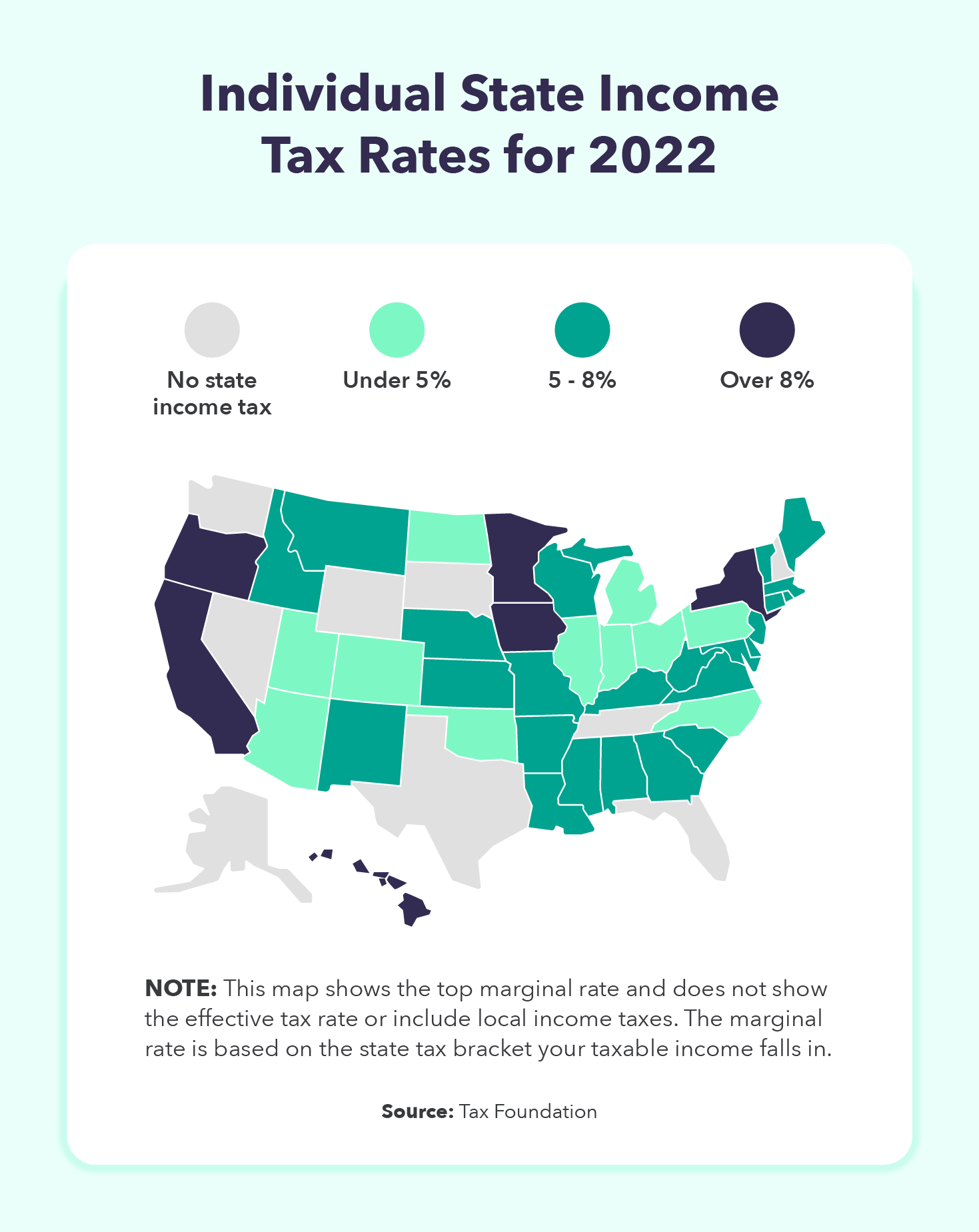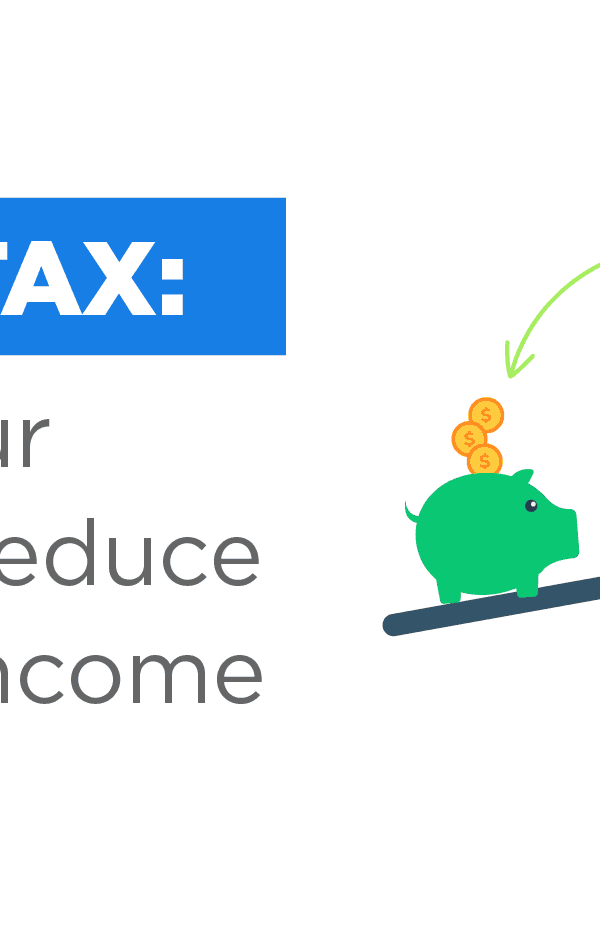What is income tax and how is it calculated?

Save more, spend smarter, and make your money go further

Income tax is the tax that federal, state and local governments require businesses and individuals to pay each year on their total income. Gross earnings may include wages, tips, interest, dividends, unemployment and retirement distributions.
To calculate income tax, you must first determine your taxable income and filing status to see which tax bracket you fall in and the total deductions you qualify for. Once you’ve calculated how much of your total income is taxable for the year, you can determine the amount of federal and state income taxes withheld.
When you file your IRS Form 1040 at the end of the year, you’ll already have an idea of how much you can expect to pay in income tax or if you’ll qualify for a refund.
how income tax works
Regardless of your immigration status, if you are working and earning income in the United States, you must pay federal income tax on your total income to the Internal Revenue Service (IRS) each year. Based on the guidelines set by the IRS, you will calculate your taxable income after taking into account deductions and exemptions. Then, you’ll see whether you qualify for any tax credits before determining the total amount you owe in taxes.
The government uses these personal income taxes to fund programs such as national security, roads, schools, government services, and social security.
Computation of Taxable Income
Taxable income is the amount that you have earned during the year that is subject to taxes. This is equal to your gross income, or annual income, for the deductions and exemptions you qualify for. When filling out your Form 1040 to pay taxes, you’ll calculate your taxable income using the total wages, tips and other compensation found in box 1 of Form W-2.

Discount
Tax exemptions such as charitable donations or dependent exemptions reduce your taxable income and the amount you owe in taxes. Since the standard deduction increased with the Tax Cuts and Jobs Act of 2017, the personal exemption has been phased out for 2022.
Standard Vs. itemized deductions
When filing your taxes, you can choose to itemize your deductions or take the standard deduction, depending on your filing status. You’ll want to itemize only if your eligible deductions exceed the standard deduction.
If someone can claim you as a dependent, you can take the standard deduction of $1,150, or your total earned income plus $400 – whichever is greater. If this total exceeds the standard deduction for your filing status, you’ll use the standard deduction listed below instead.
These rates are based on IRS Revenue Procedure 2021-45.
| 2022 Standard Deduction | |
|---|---|
| filing status | deduction amount |
| alone | $12,950 |
| married filing jointly | $25,900 |
| head of household | $19,400 |
| married filing separately | $12,950 |
Understanding Your Federal Income Tax Bracket
Based on your filing status — single, married filing jointly, married filing separately, or head of household — and your taxable income, you are placed in a federal tax bracket that depends on your tax rate and your income. But it determines the amount of tax to be paid.
What is federal income tax withholding?
Federal income tax withheld is the amount that is removed from your paycheck during the year that goes toward taxes. This number can be found in box 2 of Form W-2, which you will receive from your employer at the end of each year.
Which tax bracket am I in?
Once you’ve calculated your taxable income, you can view your current federal tax brackets and determine the taxes you owe based on your filing status. You can find your taxable income on line 37 of Form 1040.
The seven income tax brackets for 2022 range from 10 percent on income equal to $539,900 or more for single filers to 37 percent on income less than $10,275. Below, you can find the effective tax rate based on your filing status and taxable income.
| 2022 federal income tax brackets and rates | ||||
|---|---|---|---|---|
| tax rate | alone | married filing jointly | head of household | married filing separately |
| 10% | $0 to $10,275 | $0 to $28,550 | $0 to $14,650 | $0 to $10,275 |
| 12% | $10,275 to $41,775 | $20,550 to $83,550 | $14,650 to $55,900 | $10,275 to $41,775 |
| 22% | $41,775 to $89,075 | $83,550 to $178,150 | $55,900 to $89,050 | $41,775 to $89,075 |
| 24% | $89,075 to $170,050 | $178,150 to $340,100 | $89,050 to $170,050 | $89,075 to $170,050 |
| 32% | $170,050 to $215,950 | $340,100 to $431,900 | $170,050 to $215,950 | $170,050 to $215,950 |
| 35% | $215,950 to $539,900 | $431,900 to $647,850 | $215,950 to $539,900 | $215,950 to $323,925 |
| 37% | $539,900 or more | $647,850 or more | $539,900 or more | $323,925 or more |
state and local income tax
Only nine states in the US – Texas, Florida, Tennessee, Alaska, Nevada, Washington, New Hampshire, Wyoming and North Dakota – do not collect state income tax. The other 41 states levy either a flat or graduated-rate income tax.

tax credits
While deductions reduce your taxable income, tax credits reduce the amount of your tax, also known as tax liability. If your tax credits exceed the amount of taxes owed, you may be entitled to a refund. Be careful to follow the IRS rules for how to calculate your tax credit before claiming it on your tax return.
Individuals may qualify for the Family and Dependents Credit, Income and Savings Credit, Homeowner Credit, Health Care Credit, and Education Credit. The Child Tax Credit and the Dependent Care Credit are some of the most common tax credits that individuals qualify for.
How do I pay taxes or get a refund?
Once you’ve determined the amount of federal and state income taxes you owe for the year, you have a few options for paying them. If you filed Form W-2 with your current employer, they will withhold a portion of each of your paychecks toward your income taxes throughout the year — this is your tax withholding.
Many people pay a little more as income tax during the year than what is actually payable. When filing your return, you’ll calculate how much you actually owe. If you overpaid, you’ll qualify for a tax refund.
If you didn’t have income taxes withheld from your pay during the entire year or you pay more than what was withheld, you’ll need to pay those taxes when you file with the IRS. By calculating your income taxes, you can estimate how much you owe in taxes so you can budget throughout the year and follow our tax planning strategies to lower your tax liability and reduce tax season stress.
Our budgeting app makes it easy to set aside money each month to pay your taxes at the end of the year and track your refund even after you file.
Sourcing

Save more, spend smarter, and make your money go further

-
previous post
WTFinance: Annuities vs Life Insurance














